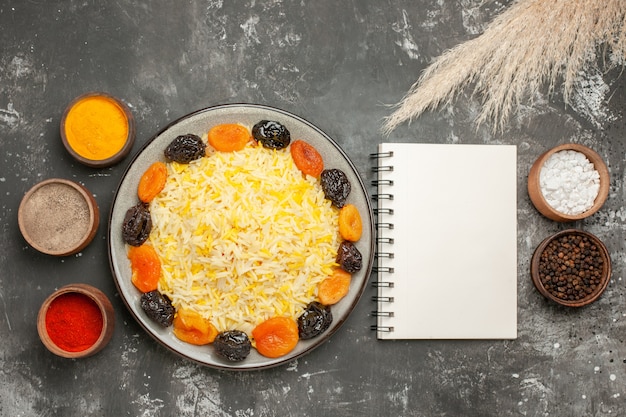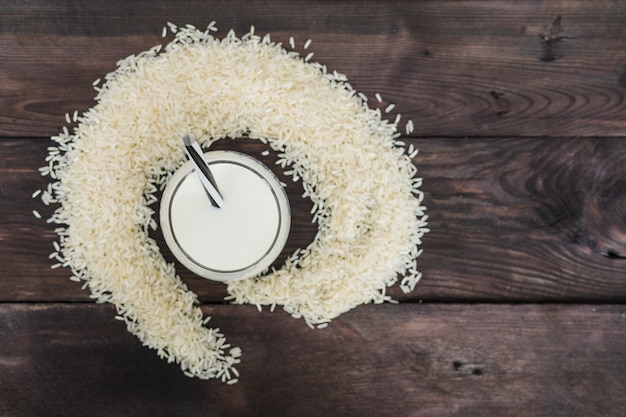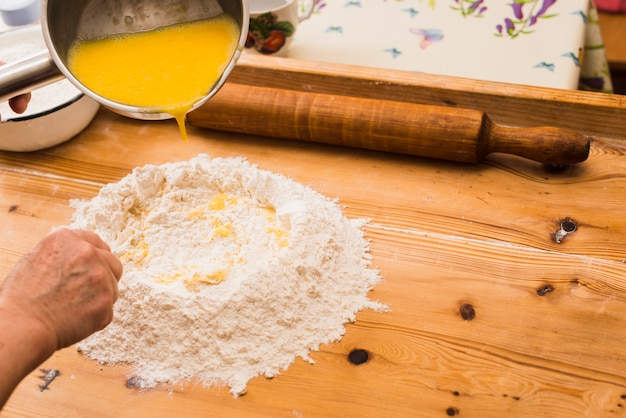Oh, basmati rice. The very name conjures up images of fragrant, fluffy grains, the perfect foil for rich curries and the cornerstone of countless family meals. It's a staple in my kitchen, and I suspect it's a beloved ingredient in yours too. But we've all been there, haven't we? Those times when the rice turns out mushy, sticky, or just plain bland. It's a tragedy, really! But fear not, my culinary comrades. I'm sharing my foolproof guide to cooking perfect basmati rice, every single time. So, grab your trusty rice cooker (or saucepan!), gather your ingredients, and let's embark on this aromatic journey together.
(Part 1) The Art of Choosing Basmati Rice

We can't just grab any old rice from the supermarket and expect culinary magic. Choosing the right basmati rice is crucial, just like selecting the perfect canvas for a masterpiece. Think of it as the foundation for a delicious experience.
Subheading 1: Long Grain - The Key to Perfect Texture
First, you'll want to make sure you're choosing long grain rice. This is non-negotiable, my friends! Long grains are the key to that beautifully separate, fluffy texture we all crave. short grain rice, on the other hand, tends to be stickier, which just won't do for the delicate nature of basmati. Think about it like this: long grain basmati is the ballerina, gracefully gliding across the plate, while short grain rice is the tap dancer, prone to a bit of a jiggle.
Subheading 2: The "Extra Long" Difference
Now, here's a little secret I've learned over the years. Look for "extra long" basmati rice. It's a bit more expensive, but trust me, it's worth it. The grains are even longer and cook up to an exceptionally airy, ethereal texture. It's like the difference between a standard fluffy pillow and a luxurious goose down one - both comfortable, but one is pure indulgence. Of course, if your budget is tight, don't fret. Regular long grain basmati will still make a wonderful meal.
Subheading 3: Freshness Matters - Like a Fine Wine
Finally, always check the date on your rice. Just like a fine wine, rice ages, and its flavor and texture can deteriorate. You want that fresh, vibrant aroma and a crisp, clean bite, not a stale, dusty aftertaste. So, grab a bag with a recent date and let's move on to the next step!
(Part 2) Preparing Your Rice for Culinary Glory

Now that you have the perfect rice in hand, it's time to give it a little TLC before it takes its starring role. These simple steps might seem trivial, but they make a world of difference in the final result.
Subheading 1: The Rinse - Washing Away Excess Starch
The first step is rinsing. Think of this as a gentle spa treatment for your rice. It washes away any excess starch, which can make the rice sticky and clumpy. So, grab a large bowl and fill it with cold water. Add your rice and gently swish it around with your hands. You'll see the water turning milky as the starch releases. Keep rinsing until the water runs clear. It might feel a little tedious, but this step is absolutely essential for achieving that perfect fluffy texture.
Subheading 2: The Soaking - Unlocking Flavor and Texture
Now, here's where I introduce a little controversy. Some people swear by soaking their rice for 30 minutes before cooking. I'm firmly in that camp. Soaking allows the grains to absorb water more evenly, resulting in a more consistent texture and unlocking hidden flavors. Don't believe me? Try it for yourself! You might be pleasantly surprised by the difference.
(Part 3) The Magic Ratio: Rice and Water - A Culinary Equation

One of the most crucial aspects of cooking perfect basmati rice is getting the right ratio of rice to water. Think of it as a culinary equation. Get it wrong, and your rice will either be dry and crumbly (a tragedy!), or soggy and mushy (a culinary nightmare!).
Subheading 1: The Golden Ratio
The classic rule of thumb is 1:1.5. For every cup of rice, use 1.5 cups of water. However, through years of experimentation, I've found that 1:1.75 works best for me. It yields that slightly drier, fluffier rice I adore. But the beauty of cooking is that it's a personal journey. Feel free to adjust the ratio and find the sweet spot that suits your taste and your pot. Every stovetop and every pan is unique, after all.
Subheading 2: The Salt and Spice Touch
Don't forget the seasoning! A pinch of salt enhances the natural flavor of the rice, and I always add a couple of bay leaves to the water for a touch of aromatic elegance. These seemingly small details can elevate your rice from ordinary to extraordinary.
(Part 4) Cooking on the Stovetop - A Classic Technique
Let's get to the heart of the matter! There are a few ways to cook basmati rice, but for me, the stovetop method reigns supreme. It's a simple, straightforward approach that always delivers perfect results.
Subheading 1: The Boil - Getting Started
Start by choosing a saucepan with a tight-fitting lid. Add your water, salt, and bay leaves. Bring the water to a rolling boil. Once the water is bubbling furiously, add the rinsed rice. Stir gently to prevent sticking.
Subheading 2: The Simmer - Patience is Key
Now, here's where the magic happens. Cover the pan with the lid and reduce the heat to a low simmer. Let the rice cook for about 15 minutes, but be sure to check the cooking time on the packet. Remember, each rice is unique, and cooking times can vary slightly. You want the rice to be cooked through, but still have a slight bite to it.
Subheading 3: The Rest - Allowing the Rice to Perfect
Once the rice is cooked, take it off the heat. But don't rush to serve it just yet. Let the rice sit, covered, for 5-10 minutes. This "resting" period is crucial for allowing the rice to steam and absorb any remaining water. This step ensures that your rice is perfectly fluffy and separate. It's the final step in creating a culinary masterpiece.
(Part 5) The Rice Cooker - Effortless Convenience
If you're a rice cooker enthusiast, rejoice! Rice cookers are a wonderful tool for achieving perfectly cooked basmati rice. They do all the heavy lifting, allowing you to relax and enjoy the anticipation of a delicious meal.
Subheading 1: The Easy Way - Letting the Machine Do the Work
The beauty of using a rice cooker is its simplicity. Follow the same rice-to-water ratio we discussed earlier (1:1.75 for my fluffy preference). Add your rinsed rice and water to the rice cooker, close the lid, and press the start button. That's it! Let the machine work its magic.
Subheading 2: The Timing - Patience is a Virtue
Depending on your rice cooker, it might take about 20-30 minutes to cook. Don't worry if it takes a little longer. Once the cooking cycle is complete, your rice cooker will usually switch to a "warm" setting, keeping your rice warm and ready when you are.
(Part 6) The Fluff Factor - Achieving Airy Perfection
So, your rice is cooked, steaming, fragrant, and looks absolutely divine. But there's one more crucial step to take: fluffing. This is the final touch that transforms cooked rice into a cloud of delicate, separate grains.
Subheading 1: The Fork Method - Simple and Effective
The easiest way to fluff your rice is with a fork. Gently insert the fork into the rice and lift and separate the grains. This prevents the rice from clumping together and creates that airy texture we all desire.
Subheading 2: The Aeration Technique - For a Lighter Touch
If you want a slightly gentler approach, use a large spoon or a rice paddle. Gently lift and stir the rice, allowing air to circulate and help it dry out slightly. This method is especially helpful for those who prefer a drier, fluffier texture.
(Part 7) Storage and Reheating - Preserving the Perfection
Your perfect basmati rice is ready. Now, let's talk about how to store it and reheat it without compromising its delicious texture.
Subheading 1: The Cool Down - Avoiding Moisture
Once your rice is cooked, let it cool down completely. You can transfer it to a bowl or leave it in the pot. The key is to ensure it's not still steaming hot when you put it away.
Subheading 2: The Storage - Keeping it Fresh
Store your rice in an airtight container in the fridge for up to 3 days. For optimal flavor and texture, it's best to enjoy it as soon as possible.
Subheading 3: The Reheating - Restoring the Fluff
When you're ready to reheat your rice, you can use a microwave, a saucepan on the stovetop, or even a rice cooker. If the rice seems a bit dry, add a little bit of water. But be careful not to overcook it! You want to restore its fluffiness, not create a soggy mess.
(Part 8) Delicious basmati rice recipes - Elevating Your Meals
You've mastered the art of cooking perfect basmati rice. Now it's time to explore its culinary possibilities. Here are a few of my favorite recipes that showcase the versatility and deliciousness of basmati rice.
Subheading 1: Classic chicken tikka masala - A Time-Honored Pair
Let's start with a classic. Chicken tikka masala is an iconic dish, and basmati rice is its perfect companion. The rich, creamy sauce, tender chicken pieces, and the light, fluffy rice create a symphony of flavors and textures that's truly satisfying.
Subheading 2: Spicy vegetable biryani - A Vegetarian Delight
For a vibrant and flavorful vegetarian option, look no further than vegetable biryani. This aromatic dish is a celebration of spices and fresh vegetables, with layers of flavor that will tantalize your taste buds. The rice is cooked with the vegetables, absorbing their unique aromas and creating a truly unforgettable experience.
Subheading 3: Simple rice pudding - A Comforting Classic
No culinary journey is complete without a classic rice pudding. It's comfort food at its best, a warm and comforting dessert that's perfect for a cozy evening. Simply cook your rice in milk with sugar and spices, and you've got a truly satisfying treat. You can add a touch of vanilla, cinnamon, or even a pinch of nutmeg for a touch of warmth and complexity.
(Part 9) Tips and Tricks - Mastering the Art
Now, here are a few more tips and tricks that will help you unlock the full potential of your basmati rice.
Subheading 1: The Don'ts - Avoiding Common Mistakes
First, let's talk about the things you shouldn't do. Don't overcook your rice! It will turn mushy and lose its delicate texture. And don't stir it too much while it's cooking. Let it simmer gently, allowing the grains to cook evenly.
Subheading 2: The Dos - Enhancing the Experience
Now for the good stuff! Always use fresh ingredients. A high-quality rice is essential for achieving that perfect flavor and texture. And don't be afraid to experiment with different flavor combinations. Add a sprinkle of chopped cilantro, a few slivers of almonds, or a dash of lemon juice for a unique and delicious twist.
Subheading 3: The Final Touch - Presentation Matters
Finally, remember that presentation matters. A simple but elegant serving of basmati rice can elevate your meal to new heights. Use a nice bowl, add a sprinkle of chopped herbs, and maybe even a drizzle of oil for a glossy shine.
(Part 10) FAQs - Addressing Your Questions
Here are some frequently asked questions about basmati rice.
| Question | Answer |
|---|---|
| Can I use a different type of rice for this recipe? | While basmati rice is ideal for its unique flavor and texture, you can use other long grain rice varieties. However, the results may vary. The aroma and texture won't be the same, and the cooking time may differ slightly. |
| What if my rice is a bit sticky? | It might be because you didn't rinse it properly. If your rice is a bit sticky, try fluffing it up with a fork or adding a tablespoon of water and letting it steam for a few more minutes. You can also try adding a bit of lemon juice, as it helps to break down the starch and create a lighter texture. |
| How can I make my basmati rice more flavorful? | Add a pinch of turmeric or saffron to the cooking water for a vibrant color and a hint of flavor. You can also add a small piece of cinnamon stick or a few cardamom pods for a warm, aromatic touch. For a bolder flavor, try toasting the spices in a dry pan before adding them to the water. |
| Can I cook basmati rice in a pressure cooker? | Absolutely! Pressure cookers are a great way to cook rice quickly and efficiently. You'll need to adjust the cooking time and water ratio, so be sure to check your pressure cooker's instructions. Remember, the goal is to achieve that same fluffy, separate texture. |
| What are some other dishes I can make with basmati rice? | Besides curries and biryani, you can use basmati rice in salads, soups, rice bowls, and even desserts. It's a versatile ingredient that can be used in countless ways! Get creative and explore the endless possibilities of this culinary gem. |
So, there you have it! My ultimate guide to cooking perfect basmati rice. Now, go forth, experiment, and create culinary masterpieces. Happy cooking!
Everyone is watching

Prime Rib Roast Cooking Time Chart: Per Pound Guide
Cooking TipsPrime rib roast. Just the name conjures images of lavish dinners, crackling fires, and hearty laughter. It’s ...

How Long to Bake Potatoes in the Oven (Perfect Every Time)
Cooking TipsBaked potatoes are a staple in my kitchen. They're incredibly versatile, delicious, and surprisingly easy to m...

Perfect Rice Every Time: The Ultimate Guide to Cooking Rice
Cooking TipsAs a self-proclaimed foodie, I've always been a bit obsessed with rice. It's the foundation of countless cuisi...

The Ultimate Guide to Cooking Asparagus: Tips, Techniques, and Recipes
Cooking TipsAsparagus. The mere mention of this spring delicacy conjures up images of vibrant green spears, crisp and burs...

Ultimate Guide to Cooking the Perfect Thanksgiving Turkey
Cooking TipsThanksgiving. Just the word conjures up images of overflowing tables laden with delicious food, the scent of r...
